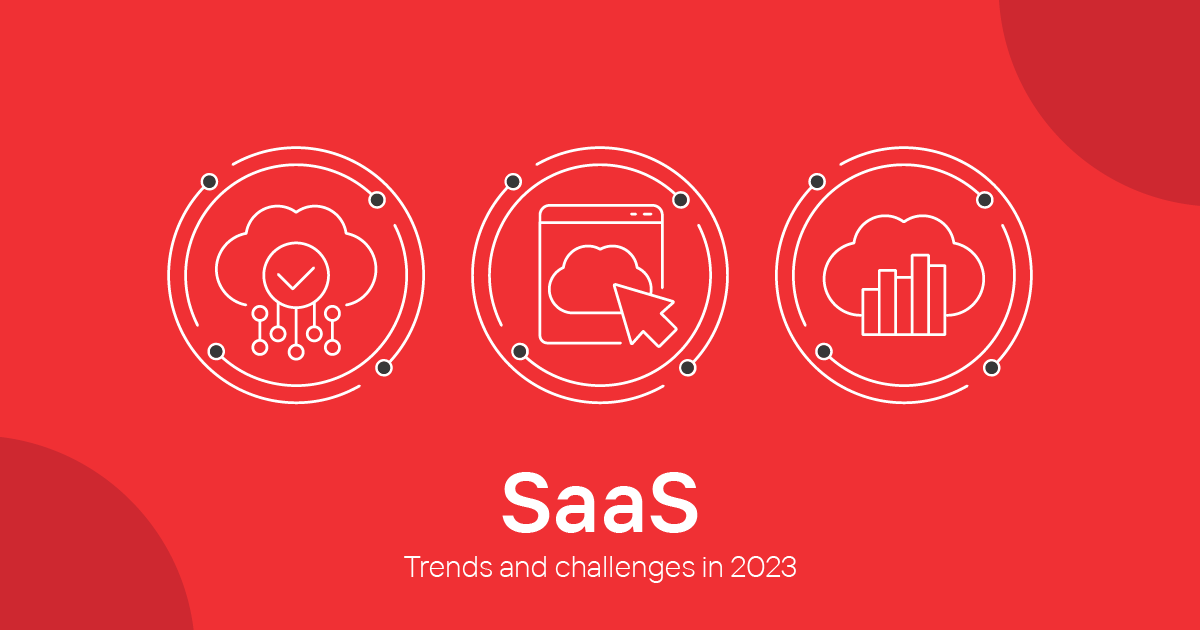The Software-as-a-Service (SaaS) industry is a rapidly growing part of today’s cyberspace economy. Both internet companies and brick-and-mortar businesses rely on cloud-based services to support their activities. Gartner predicts that SaaS cloud applications alone will reach over $143.7 billion in value in 2023. This industry offers both B2B and B2C services.
There are lots of thoughts and theories regarding what 2023 has in store for SaaS. Between the emergence of new AI trends, global economic recessions, and post-COVID recovery measures, there is a space for various conversations occupying SaaS providers. In this article, we will examine the state of SaaS in 2023 and where it might be headed.
Evolution of SaaS after COVID-19
SaaS providers found a newly created space to thrive and become undeniable during the COVID-19 pandemic. As the world returns to a new normal in 2023, one which includes more in-office work and in-store shopping, many elements adopted during the pandemic will likely remain with employers and consumers. The habits we have learned are proving difficult to unlearn.
Reviews show that 6 out of 10 businesses accelerated their digital transformation plans during the beginning stages of the pandemic. For many, that included exploring and adopting SaaS to connect with consumers and give employees the tools they needed to work remotely. While it’s impossible to predict exactly how SaaS will continue evolving following this unprecedented growth, we can look forward to a few trends in 2023, as well as some challenges.
How will SaaS change in 2023?
Expectations are changing for SaaS. Without flexible, customizable, and powerful means of communication with customers, businesses will fall behind in a world where being present and connected is more important than ever before. In 2023 and beyond, SaaS companies should be prioritizing the following:
1) Customer Experience
2) Efficient Products
With the proper focus areas, deploying the right SaaS has numerous benefits that enhance customer understanding and experience. It has always been important for a business to know its customer, but nowadays, customers expect more personalization than ever after the bombardment of generic advertising during the pandemic. It is no longer enough simply to understand the broad segment into which your customer falls; businesses need a much greater focus on the individual customer and how their product or service can specifically help them. Let’s have a look at some of the trends and challenges facing SaaS this year:
1. Challenge: Embracing AI-led initiatives
The world was taken aback when ChatGPT by OpenAI launched in November 2022. Millions of people have already used it and countless others are too concerned that they will lose their jobs to similar AI tools. But that doesn’t have to be the case yet. While some said their jobs may be at risk in the future, others say such tools will merely complement their professions. SaaS professionals are now faced with the challenge to implement such tool and other Machine Learning (ML) initiatives in their software. SaaS solutions can play a strategic role in several areas when paired with AI, such as:
- Personalization
- Automation
- Analytics
- Security
2. Challenge: Improving security
Any cloud-based technology can introduce security issues to a company’s IT infrastructure. The problem becomes even more significant when enterprises use public code repositories that could expose their API credentials. Successful SaaS providers need to address security needs by promoting features such as:
• Multi-factor authentication
• End-to-end encryption
• Zero-trust access controls
• Security tokens
3. Challenge: Growing competition
A $34 billion industry like SaaS will most certainly attract attention from a broader range of companies that want to provide SaaS services. It seems likely nowadays that the SaaS industry model will follow suit what happened with the cloud-services industry, where a small number of large vendors will meet the needs of most clients, while a larger number of small vendors will offer boutique services that cater to the needs of unique clients. The top cloud providers include:
- Amazon Web Services
- Microsoft Azure
- Google Cloud Platform
- Red Hat (an IBM subsidiary)
These companies have the resources to potentially dominate the SaaS industry, too. However, it’s important for technology companies to recognize that the largest companies cannot always meet everyone’s needs. A small business that wants specific SaaS services might do better to focus on the benefits of working with a smaller SaaS vendor.
4. Trend: Omnichannel experiences
SaaS will certainly continue to bring more communication options together. Ideally, multichannel and omnichannel dashboards will include ongoing integrations that evolve with customer trends (for example: the metaverse). By following the communication preferences of customers, businesses should find that they can gain a competitive advantage that helps them:
• Showcase products and services
• Generate leads
• Drive sales
• Increase customer loyalty
• Monitor customer engagements in real time
• Collect and analyze data for ongoing improvements
5. Trend: SaaS Super Apps
The rise of Super Apps is an emerging trend you should be aware of. Super Apps are unique consumer apps that have several use cases integrated together. They follow the “One API For All” ideal popularized in China and now taking over the rest of the world. Unified APIs are important for several reasons such as:
A. Reducing design and development time, allowing quicker go-to-market
B. Companies can scale quicker by focusing on growth rather than building from scratch
C. Service automation and running several simultaneous services
6. Trend: Data-as-a-Service
As more and more organizations turn to the cloud to modernize their infrastructure and workloads, Data-as-a-Service, or DaaS, is becoming an increasingly popular solution for data integration, management, storage, and analytics. By embracing DaaS, companies can improve the agility of data workloads, reduce time-to-insight, and increase the reliability and integrity of their data. Benefits of Data-as-a-Service include:
• Minimal setup time
• Improved functionality
• Greater flexibility
• Cost savings
• Automated maintenance
Conclusion
Perhaps more than many other economic sectors, the SaaS industry continues to transform and change with the emergence of new technologies. A rapid transformation occurred within this industry during the past decade as companies adjusted to the unprecedented spread of mobile devices. As a result, businesses in this field appear well-positioned to enjoy significant opportunities to prosper during 2023 and beyond.
CEQUENS is committed to staying ahead of emerging SaaS trends to ensure clients get the services and tools they need for improved business marketing and omnichannel communications.
Contact our team today to learn more about how your company can benefit from our products and services.


